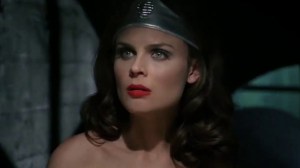
This week is a big one for fans of the symbiote aliens at Marvel Comics. Carnage, now bonded with Norman Osborn, will reappear as part of the big debut of the Red Goblin in the pages of Amazing Spider-Man #798. Elsewhere in the Marvel universe, the sequel to Venomverse will begin with Venomized #1, bringing the dangerous Poisons to Earth where they’ll seek to destroy every hero. In addition to both of these series, there’s even more to look forward to with a brand new Venom #1 premiering in May from writer Donny Cates and artist Ryan Stegman.
Videos by ComicBook.com
Ever since the 1990s, it has been rare for Marvel Comics to not have at least one series focused on Venom or another symbiote, if not more. The concept behind these characters has shown incredible lasting power in stories and popularity with fans. It’s not just Venom, but the ever-growing family of symbiotes and their distant alien roots. That begs the question of what exactly has made these characters a potent mover and shaker in superhero comic for three entire decades. It’s a question worth exploring.

Birth of an Alien
Venom’s origin seems relatively simple, especially when compared to most X-Men. Boy travels to alien planet. Boy gets magic suit. Magic suit is actually an alien. Alien tries to eat boy. However, the creation of both the symbiotic suit and the character Venom are much more complex when you dig into them.
The alien costume is credited to a total of five creators, including Mike Schueller, a reader from Illinois who wrote a letter about Spider-Man’s concept to editor-in-chief Jim Shooter — who paid $220 for the idea. Mike Zeck and Roger Stern first introduced the suit in Amazing Spider-Man #252 in which Spider-Man returns from “Secret Wars”, but it was Tom DeFalco and Ron Frenz that revealed the suit was a living, alien organism. It took years before the alien took on a personality of its own, finally being transformed into Venom and bonding with Eddie Brock in the pages of Amazing Spider-Man #300 written by David Michelinie and drawn by Todd McFarlane.
That long road of character creation was worth the wait though. Venom was imbued with many of the best design extras of superhero comics in the 1990s, essentially meaning that he was exceedingly extra. Todd McFarlane defined his style as much with Venom as he did with his creator-owned creation Spawn a couple of years later. Venom was packed with muscles, many of which don’t exist in the human anatomy, but looked incredible in a fight. His big eyes and long, slavering jaw were intimidating, curling with sharp lines and packed with teeth and a tongue that would scare Gene Simmons. The core of the character design balanced what made Spider-Man popular. The young man with a lithe frame and plenty of grace was paired against a monster that was all about power. That positioned a great ongoing rivalry between the two, but also offered readers a more violent and frightening take on the set of powers that defined Marvel Comics’ most popular hero.

Generations to Come
Just like with Spider-Man, it didn’t take long the popularity of Venom to be spun into multiple titles and spin-off characters (pun entirely intended). These took two primary forms in the early ’90s. There was Venom’s own series, Venom: Lethal Protector, beginning in 1993. It recognized that Venom wasn’t just an engaging opposite for Spider-Man. The character design offered a great anti-hero following in the tradition of Wolverine and Ghost Rider. Unlike the original pairing with Peter Parker, the new Venom bonded with Eddie Brock could utilize Spider-based powers to frightening effect.
There was also the original spin-off character of Carnage who first appeared in Amazing Spider-Man #361. His creation was in response to an edict from Marvel editorial that Venom could not be killed as writer David Michelinie originally planned for Amazing Spider-Man #400. The character was too popular and had exceeded Michelinie’s intentions. Carnage offered a pure villain with no moral compass who could be moved in different directions. The new foe also offered a key revelation about the flexibility of symbiote-based characters. Unlike Venom, Carnage was not defined by a relationship to Spider-Man. He was much less muscular and played more with the symbiote power of shapeshifting, transforming limbs into an entire arsenal of weapons.
Once Carnage took off, it was only a matter of time until more offspring appeared. An entire race of symbiotes, the Klyntar, were invented providing a seemingly unlimited supply of new takes on the aliens. None have reached the popularity of Venom or Carnage, but they have provided plenty of opportunities for new stories like the recent “Venomverse” and now “Venomized”.

Endless Combinations
Both of those stories reveal one more element of the symbiote’s enduring popularity: their ability to merge with any character. Initial combinations with Eddie Brock and Cletus Kassidy played on the most interesting aspects of the individuals. Brock was a bodybuilder with too high of an opinion of himself and was transformed into a monstrous vigilante with no self-restraint. Kassidy was a skinny psychopath who became a razor-sharp killing machine. There was no reason to only pair symbiotes with ordinary humans, a thought made obvious by the original bond with Peter Parker.
In the decades since Venom made his initial jump from Parker to Brock, almost every hero in Marvel Comics has been bonded with a symbiote at some point. Many of these stories took place in “What If…” issues or alternate Earths, but now in “Venomized” the Klyntar will be offering protection for the mainstream Marvel universe. Just like Venom enhanced Peter Parker and others, these venomized variants provide takes on heroes that are particularly extra. They also offer unique spins on villains, as made clear by the hype surrounding the revelation of the Red Goblin.
Whether it’s Venom and Carnage or an unnamed member of the Klyntar species, symbiotes have been offering fans enhanced versions of new anti-heroes and villains as well as their favorite Marvel characters for a long time now. When Spider-Man first wore the black-and-white suit he was given a new appeal and it has lasted in stories far removed from the webslinger. Symbiotes play on the long history of Marvel Comics, providing opportunities to explore the key elements of favorite characters or invent brand new ones. They are an endlessly flexible set of aliens that have added to the publisher’s lore in every title from Amazing Spider-Man to Guardians of the Galaxy. In many ways the idea has formed a symbiotic relationship with the Marvel universe itself, giving many stories an extra twist or vitality. That’s why it’s unlikely the next 30 years will see Venom or any of his kind leaving the pages of comics.








